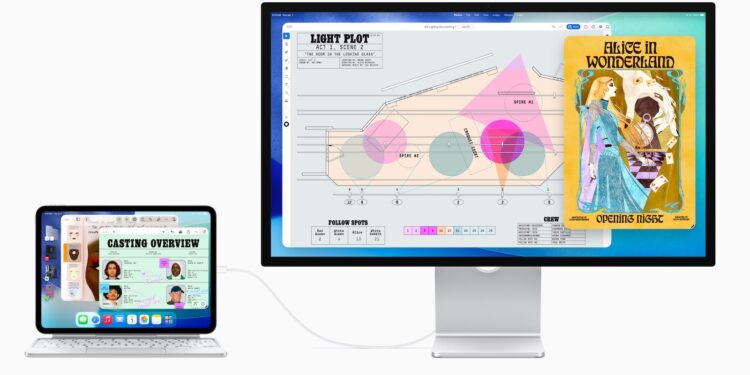iPadOS 26 is available and brings fundamental changes to the iPad. Apple has fundamentally redesigned the user interface and multitasking system. The goal: to finally make the iPad feel like a real computer—no longer like a large iPhone, but more like a Mac.
The iPad already received the M1 chip, which is also found in Macs, in 2021. So why did it take four years for the operating system to finally take full advantage of the hardware? Craig Federighi, Apple's chief software officer, explains in an interview with ArsTechnica that it was less about performance—that was already there—but rather about the interaction model.
Why the iPad had to wait so long for desktop features
An iPad is operated directly with the finger. This means that every touch must trigger a visible response without delay. As soon as you feel like the device is lagging behind, the user experience suffers massively. With a Mac, it's different – here, users operate with a mouse and keyboard, which makes small latencies more forgivable. In addition, Apple delayed the introduction of features like window management for a long time because the iPad was traditionally designed for simplicity and focus. It wasn't until the increasing use of the keyboard and trackpad on the iPad that Apple saw the time was right to expand the system (via Arstechnica ).
What iPadOS 26 changes
The new operating system brings complete window management to the iPad for the first time. You can now open multiple apps at once, move them freely, adjust their size, and layer them on top of each other – just like you know from the Mac. There is also a menu bar that appears depending on the context and provides direct access to important functions. Before that, there were Split View and Slide Over, and later Stage Manager. But all of these solutions were not as flexible or intuitive as real windows. iPadOS 26 puts an end to compromises and brings the familiar macOS workflow directly to the tablet. A lot has changed under the hood too. Apple has completely redesigned the window system and reworked the management of background processes. The result: Even older iPads that don't support Stage Manager benefit from the new window management. iPadOS 26 uses the hardware more efficiently and distributes system resources more intelligently.
- Another point: User habits have changed. More and more people are using their iPad in conjunction with a keyboard and trackpad. This is increasing the demand for productivity-oriented features that were previously reserved for the Mac.
iPadOS 26: The iPad is now a real computer – almost
With iPadOS 26, Apple has made the biggest changes to the iPad since its launch. The new window management, menu bar, and redesigned system behavior bring the iPad significantly closer to the Mac. Those looking to work productively now have significantly more options. Nevertheless, the iPad remains a touch device with its own unique requirements. Apple had to master the balancing act between direct usability and complex functionality – and with iPadOS 26, it has truly achieved this for the first time. If you want to use your iPad as a work device, this update is essential. It takes the iPad to a new level and makes it a viable alternative to a laptop. (Image: Apple)
- tvOS 26 relies on Thread 1.4 for a better Apple Home
- iPadOS 26: These features turn your iPad almost into a Mac





